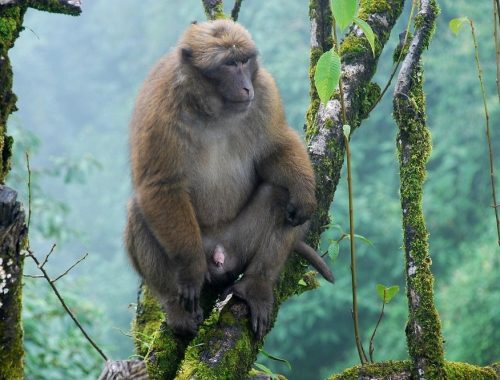The bent-toed gecko, named Cyrtodactylus urbanus, was earlier thought to be same as the Khasi Hills lizard
Guwahati, the largest city in the Northeast, has yielded a new species of lizard – the urban bent-toed gecko.
Markedly different
Jayaditya Purkayastha and Madhurima Das, two of the five herpetologists and researchers who made the discovery, had teamed up with four others to be the first to record the brown blotched Bengal tree frog from urban West Bengal last year.
The new species of lizard, zoologically named Cyrtodactylus urbanus, is markedly different in molecular structure, blotch and colour from the Cyrtodactylus guwahatiensis, or the Guwahati bent-toed gecko, that was discovered two years ago.
The study on the urban bent-toed gecko has been published in the latest edition of Zootaxa, a peer-reviewed scientific mega journal for animal taxonomists. Apart from Mr. Purkayastha and Ms. Das, the study was co-authored by Sanath Chandra Bohra, Mumbai-based Ishan Agarwal and Aaron M. Bauer, a global authority on geckos based in Pennsylvania, U.S.
“All bent-toed geckos in Northeast India were thought to be a single species, the Cyrtodactylus khasiensis found primarily in the Khasi Hills of Meghalaya. Photographs I had taken of the urban bent-toed from the Basistha area of Guwahati in 2011, when compared with other species, made global experts realise it was a different species,” Mr. Purkayastha told The Hindu.
Though the urban bent-toed gecko falls within the khasiensis group, it differs from other members of this group in mitochondrial sequence data as well as aspects of morphology such as the number and arrangement of certain pores in males, the number of mid-ventral scales and colour pattern.
The study on the urban bent-toed gecko also provided additional information on the Guwahati bent-toed gecko, the first of the two Cyrtodactylus endemic to the areas covered by the city and the fourth from Assam.
12th from Northeast
It was also the 12th recorded gecko from the Northeast.
“What this study tries to establish is that some urban spaces too have life forms that are often overlooked but in danger of being wiped out because of concrete development. More studies need to be done before time runs out for such life forms,” Mr. Purkayastha said, adding more than 50% of the species of bent-toed geckos on earth was described in the last decade.
Guwahati is home to 26 species of amphibians, 57 species of reptiles, 214 species of birds and 36 species of mammals. The city provides that edge for urban biodiversity to thrive because it encompasses 18 hills, eight reserve forests, two wildlife sanctuaries and a Ramsar site besides the Brahmaputra river.(The Hindu)




